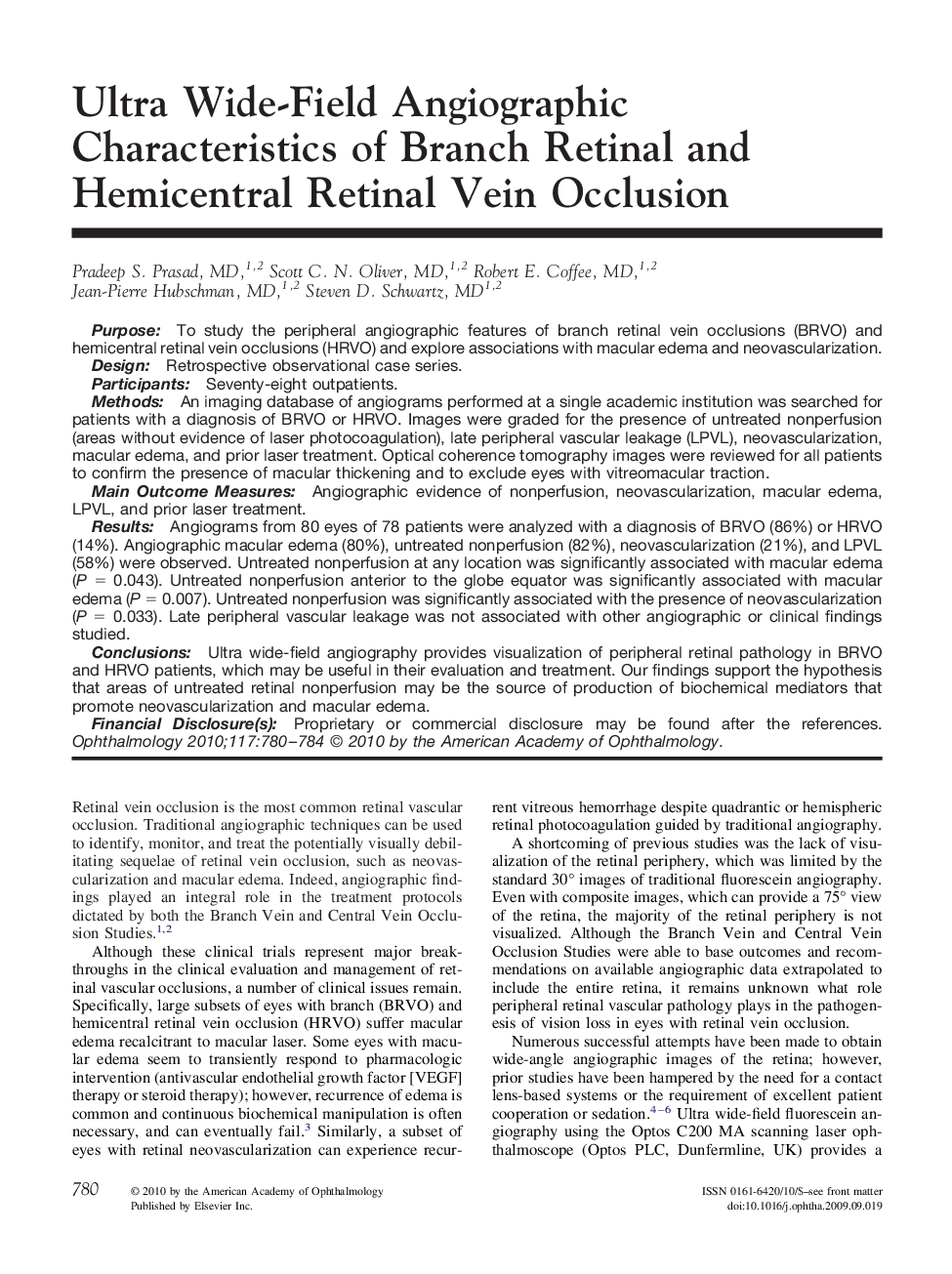| کد مقاله | کد نشریه | سال انتشار | مقاله انگلیسی | نسخه تمام متن |
|---|---|---|---|---|
| 4028407 | 1262479 | 2010 | 5 صفحه PDF | دانلود رایگان |

PurposeTo study the peripheral angiographic features of branch retinal vein occlusions (BRVO) and hemicentral retinal vein occlusions (HRVO) and explore associations with macular edema and neovascularization.DesignRetrospective observational case series.ParticipantsSeventy-eight outpatients.MethodsAn imaging database of angiograms performed at a single academic institution was searched for patients with a diagnosis of BRVO or HRVO. Images were graded for the presence of untreated nonperfusion (areas without evidence of laser photocoagulation), late peripheral vascular leakage (LPVL), neovascularization, macular edema, and prior laser treatment. Optical coherence tomography images were reviewed for all patients to confirm the presence of macular thickening and to exclude eyes with vitreomacular traction.Main Outcome MeasuresAngiographic evidence of nonperfusion, neovascularization, macular edema, LPVL, and prior laser treatment.ResultsAngiograms from 80 eyes of 78 patients were analyzed with a diagnosis of BRVO (86%) or HRVO (14%). Angiographic macular edema (80%), untreated nonperfusion (82%), neovascularization (21%), and LPVL (58%) were observed. Untreated nonperfusion at any location was significantly associated with macular edema (P = 0.043). Untreated nonperfusion anterior to the globe equator was significantly associated with macular edema (P = 0.007). Untreated nonperfusion was significantly associated with the presence of neovascularization (P = 0.033). Late peripheral vascular leakage was not associated with other angiographic or clinical findings studied.ConclusionsUltra wide-field angiography provides visualization of peripheral retinal pathology in BRVO and HRVO patients, which may be useful in their evaluation and treatment. Our findings support the hypothesis that areas of untreated retinal nonperfusion may be the source of production of biochemical mediators that promote neovascularization and macular edema.Financial Disclosure(s)Proprietary or commercial disclosure may be found after the references.
Journal: Ophthalmology - Volume 117, Issue 4, April 2010, Pages 780–784